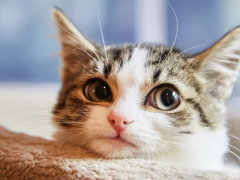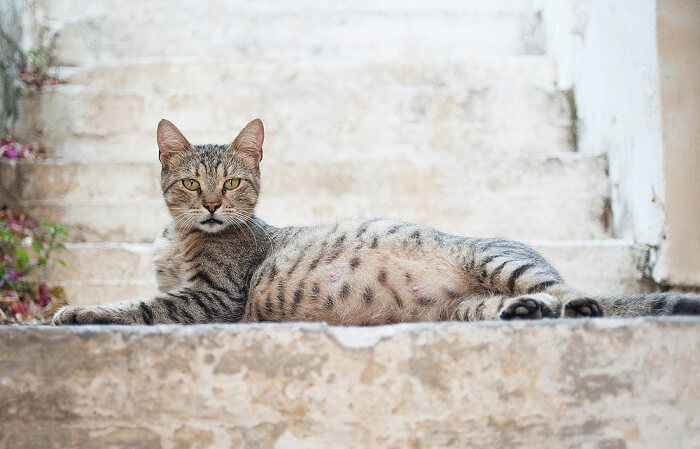
If you’ve ever been a foster parent for cats, you know what a wonderful and fulfilling experience it can be for you, as well as for the cats that you foster. Even though it may only be temporary, providing fosters with a nurturing and healthy environment is a very important step to them eventually being adopted into their permanent homes.
And, this is just as important when it comes to fostering a pregnant cat. The need for fostering a pregnant cat can be due to several different factors, such as overpopulation at animal shelters, a rescue group that doesn’t have access to a physical shelter, or stray and orphaned cats that simply need basic care and a healthy environment while pregnant.
Whatever the circumstance and whatever pregnant cat you choose to foster, there are several things to take into consideration and prepare for ahead of time. If you are not properly prepared and are not ready for the commitment, you may end up with an unhappy and unhealthy momma cat, and potentially unhappy and unhealthy newborn kittens. And, unhappy and unhealthy cats will be more difficult to adopt into permanent homes.
Fostering a pregnant cat may seem like a very daunting commitment, but with the right environment, supplies and preparation, it can be an incredibly enjoyable experience for both you and for your fosters.
So, in this article, we will give you some important information about what to know when fostering a pregnant cat, as well as giving you some useful tips about how to provide your pregnant foster with what it needs to give birth to healthy kittens. And, a happy and healthy momma cat, and happy and healthy kittens, will gradually develop into happy, healthy and adoptable cats.
What To Know When Fostering a Pregnant Cat?

Fostering a pregnant cat involves additional considerations, so it’s important to be well-prepared.
- Dedicated Space – Prepare a private and isolated space for your pregnant cat to deliver and nurse her kittens, and make sure that it is as quiet as possible and away from any additional stressors. Like all foster cats, being relocated into your home can be a traumatic experience, so it’s important to give them some time to adjust to their new surroundings and not force any unwanted interactions.
- Basic Supplies – Make sure that you have food, water, a litter box, and a nesting area for your pregnant foster cat before you bring her home. Pregnant cats enjoy their privacy when they are in labor and also when they are nursing, so it’s important that they have all that they need beforehand to make this transitional period more comfortable.
- Behavioral and Health Issues – Pay attention to your pregnant foster’s day-to-day health and be prepared to call the shelter or your local veterinarian if you notice any signs of poor health or other complications. Such signs include vaginal bleeding, a foul-smelling discharge, diarrhea, vomiting, or excessive panting.
- Birthing – Once the mother gives birth, she should begin cleaning her kittens immediately. If she doesn’t, gently clean the newborns with a towel and place them near the mother so that they can begin nursing and bonding. Also, the mother might be exhausted, so make sure that you place some food near her so that she can replenish her body.
- Kitten Care – Newborn kittens will spend most of their time sleeping and the rest of their time nursing, and after about a week their eyes will begin to open and they will start to move around and learn how to walk. Pay close attention to their behavior and their weight, and call the shelter or your local veterinarian if you see any signs of medical issues.
- Time Commitment – Like with all animals, fostering a pregnant cat requires time, patience, and a healthy home environment. Being able to provide these things is an essential part of fostering, which will help to keep the mother and kittens safe, healthy, and happy. And, safe, healthy, and happy cats and kittens will become more adoptable in the end.
6 Things To Keep In Mind When Fostering a Pregnant Cat

Remember that a pregnant cat will need dedicated space, including a nesting area where she can eventually give birth.
1. Pregnant Foster Cats Need a Dedicated Space

When bringing home a pregnant foster cat, it’s important to realize that they are being relocated into a new and potentially confusing environment. The new sights, sounds, and smells of your home can be potentially traumatic to them at first, and unwanted interaction with them may lead to increased emotional distress and a potentially unhealthy birthing process.
So, make sure that you set up a nesting area that is isolated from any other animals in your home, and that is also away from any loud noises or other potential stressors that could possibly be harmful to the pregnant foster cat and her kittens. A spare bathroom or bedroom is ideal for this situation.
2. Have Your Supplies Ready
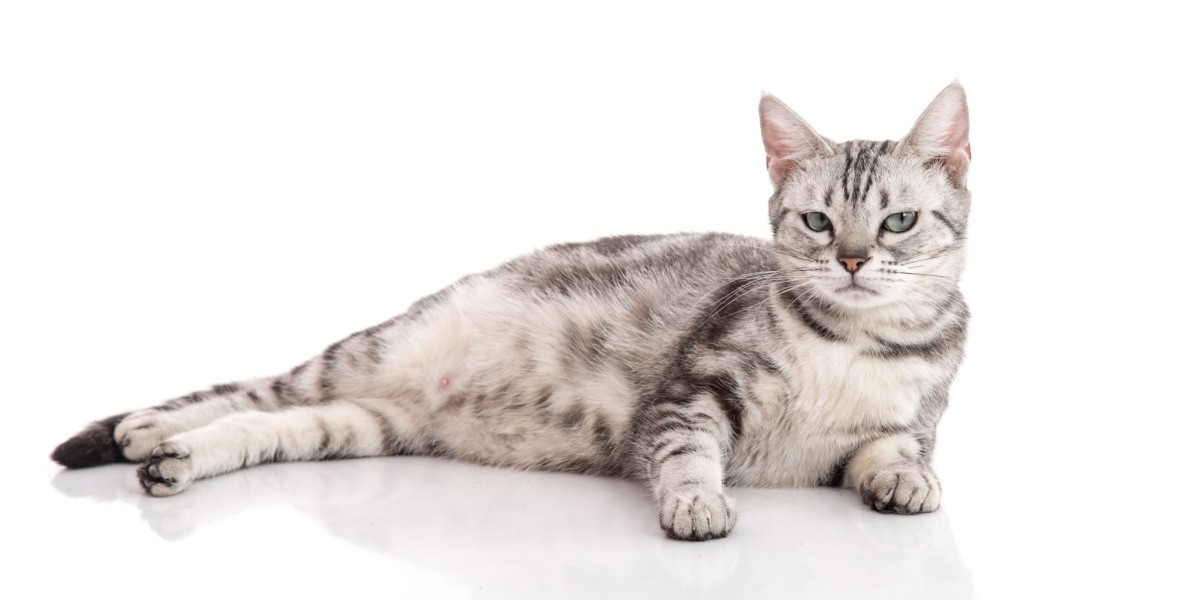
Before you bring your pregnant foster cat home, be sure to have all of your basic supplies ready and set up beforehand so that her relocation period will be more comfortable. It’s very important that your pregnant foster cat has a comfortable area where she feels safe and secure for when she eventually goes into labor and gives birth to her kittens.
Once you find her a dedicated and private space in your home, set up food and water bowls, and a litter box. As for her nesting spot, this can be a large pet carrier or crate, or even a cardboard box with an open entryway. Whatever you decide to use, make sure that you have clean blankets available so your pregnant foster cat will be warm and cozy.
3. Watch for Behavioral and Health Issues

Pregnant cats can sometimes experience complications in the days leading up to their labor, so it’s important that you pay attention to the health of the mother-to-be on a daily basis, and be on the lookout for any problematic signs. Keep in mind that you are fostering a pregnant cat from a shelter and she may have been traumatized or possibly contracted an undetected virus or infection.
So, be very vigilant about monitoring your pregnant foster’s health and be prepared to call the shelter or take her to a veterinarian if you see any signs of illness or behavioral issues. Some of these more common signs can include vaginal bleeding, a foul-smelling discharge, diarrhea, vomiting, or excessive panting.
4. Labor and Giving Birth

Perhaps the most critical part of caring for a pregnant foster is helping her through the labor process.
As you continue to monitor your pregnant foster cat’s well-being, she will eventually begin to go into labor. Approximately two days before giving birth, she will begin to produce milk, and her mammary glands will have increased in size. Also, she may exhibit signs of being unsettled or overly affectionate.
It’s important to give the mother privacy during the birthing process, but it’s also important for you to pay attention to her health, as well as the health of the newborn kittens. If you notice any unusual discharge during birth, if the mother is rejecting the kittens or if they appear to not be moving, try to place the kittens near their mother so that they can begin nursing, and be ready to call your shelter or veterinarian immediately.
5. Caring for Newborn Kittens
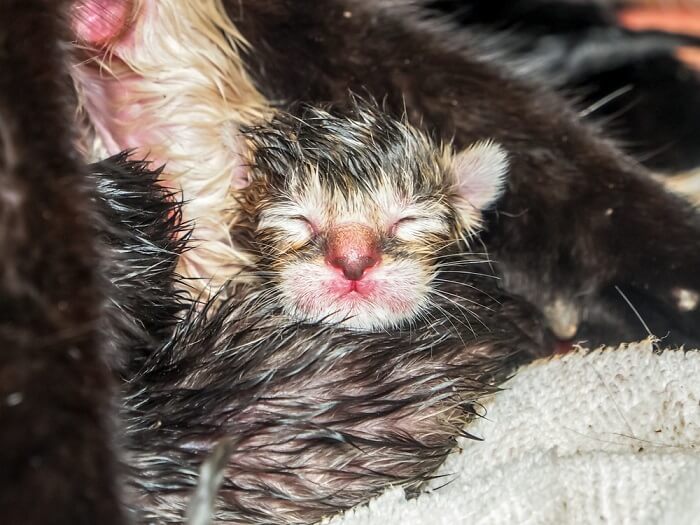
Caring for newborn kittens requires special knowledge and attention. Don’t hesitate to contact your veterinarian with any questions or concerns.
The nesting area where your mother gave birth may be soiled after her labor, so be sure to have fresh blankets available to make her and her babies are clean and comfortable. Typically, the mother will know what to do as far as cleaning her kittens, including taking care of the placentas and any additional fluids. After a healthy and successful birth, the mother will usually begin cleaning and nursing her kittens immediately.
However, if the mother hasn’t begun cleaning or nursing her kittens, or is possibly acting aggressively towards them, gently pat the kittens dry with a clean cloth or towel, and place them close to their mother’s belly so that they can start nursing and begin bonding with each other.
6. Fostering a Pregnant Cat Is a Commitment

Just like with caring for any animal, fostering a pregnant cat is an important commitment, and it’s a decision that should not be made before properly thinking it through. You may be fostering your pregnant cat and her eventual kittens for a few weeks or possibly for a few months, so it’s important to prepare yourself for both short-term and long-term commitments beforehand.
Also, if you are not properly prepared for the commitment, the soon-to-be mother and her kittens could have an unhealthy and difficult birthing experience. And, an unhealthy and unhappy birth can lead to a traumatizing experience for both you and them, which could lead to it being more difficult for the cats to be adopted into permanent homes.
Final Thoughts
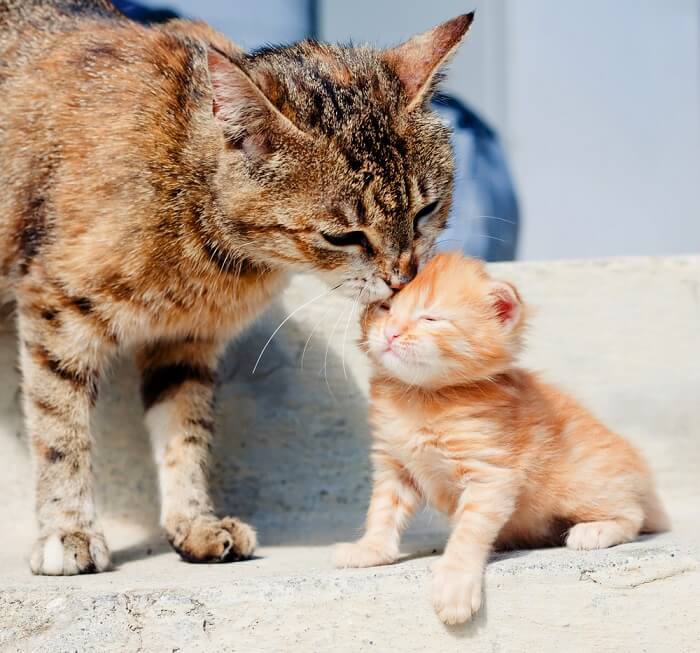
Fostering a pregnant cat can be an incredibly rewarding experience for you, as well as being a wonderful and nurturing experience for the pregnant cat and her kittens. However, there are many things to consider and prepare for before you make the decision to foster a pregnant cat.
But, if you know what you are getting into beforehand, and correctly prepare your home, you can help your pregnant foster cat and her kittens to thrive and become happy additions to their eventual forever homes. Good luck with your fostering!





